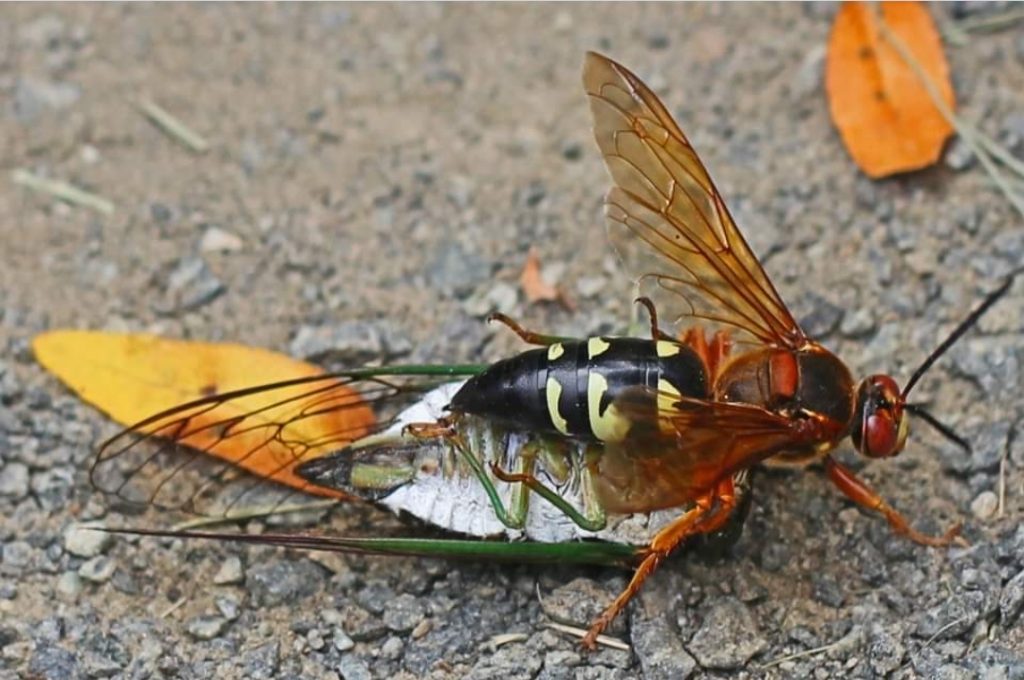In recent years, the United States has faced an alarming and deadly threat in the form of the giant killer wasp, aptly nicknamed the “deadly hornet”.
This invasive and highly destructive insect, considered the largest and most dangerous of its kind in the world, first appeared in the country in 2019 and has continued to spread fear and chaos.
The last sighting of the menacing creature was in Washington state in 2021. The discovery sent shockwaves through the region, as this “killer hornet” exhibited aggressive behaviour, attacking everything in its path.
As their nickname suggests, these hornets are capable of wiping out entire hives. Their formidable megamandibles allow them to kill and decapitate thousands of bees, take over the hive and defend it as if it were their own.
The emergence and spread of the giant killer wasp, or “killer hornet”, is a stark reminder of the constant threats that nature can pose. With its potential to devastate bee populations and harm humans, efforts to monitor, control and mitigate this invasive species are crucial to safeguard ecosystems and public safety.
Killer hornets, also known as Asian giant hornets (Vespa mandarinia), are large wasps native to East Asia. They are known for their size, aggressive behavior, and potent sting. Here are some key points about killer hornets:
- Size: They can grow up to 2 inches (5 cm) in length, making them one of the largest hornet species in the world.
- Appearance: They have a distinct yellow and black coloration, with a large, rounded head and prominent mandibles.
- Behavior: Killer hornets are known for being aggressive, especially when their nests are threatened. They can sting multiple times, and their venom can cause severe pain and allergic reactions in humans.
- Nesting: These hornets build large nests, often in trees or underground. A single nest can contain thousands of individuals.
- Impact: They are predators of honeybees and can decimate bee colonies, which poses a threat to agriculture and ecosystems.

While they can be dangerous, fatalities from killer hornet stings are rare, usually occurring in individuals who have severe allergic reactions.
The world’s most dangerous insect is often considered to be the mosquito. Here’s a brief list of some of the most dangerous insects and the diseases they transmit:
- Mosquito – Transmits malaria, dengue fever, Zika virus, West Nile virus.
- Tsetse Fly – Transmits sleeping sickness (African trypanosomiasis).
- Kissing Bug – Transmits Chagas disease.
- Sand Fly – Transmits leishmaniasis.
- Anopheles Mosquito – Specifically known for transmitting malaria.
These insects are dangerous primarily due to their ability to spread serious diseases that can lead to significant health issues and fatalities.
The world’s most dangerous insect is often considered to be the mosquito. While they may seem small and harmless, mosquitoes are responsible for transmitting a variety of deadly diseases, including malaria, dengue fever, Zika virus, and West Nile virus.
Malaria alone causes hundreds of thousands of deaths each year, primarily in tropical regions. The danger from mosquitoes stems from their ability to carry pathogens and parasites that can severely impact human health. Their widespread presence and the diseases they carry make them one of the deadliest insects on the planet.
Mosquitoes transmit diseases to humans primarily through their bites. When a female mosquito bites a person, it uses its specialized mouthparts to pierce the skin and access blood. During this process, the mosquito injects saliva into the bloodstream, which contains anticoagulants to prevent blood clotting and facilitate feeding.
If the mosquito is carrying pathogens or parasites from a previous host, these can enter the human bloodstream through the saliva. For example, in the case of malaria, the Plasmodium parasite is transmitted when an infected mosquito bites a person. Other diseases, like dengue and Zika, are also spread in a similar manner. The ability of mosquitoes to carry and transmit these pathogens makes them significant vectors for various infectious diseases.
